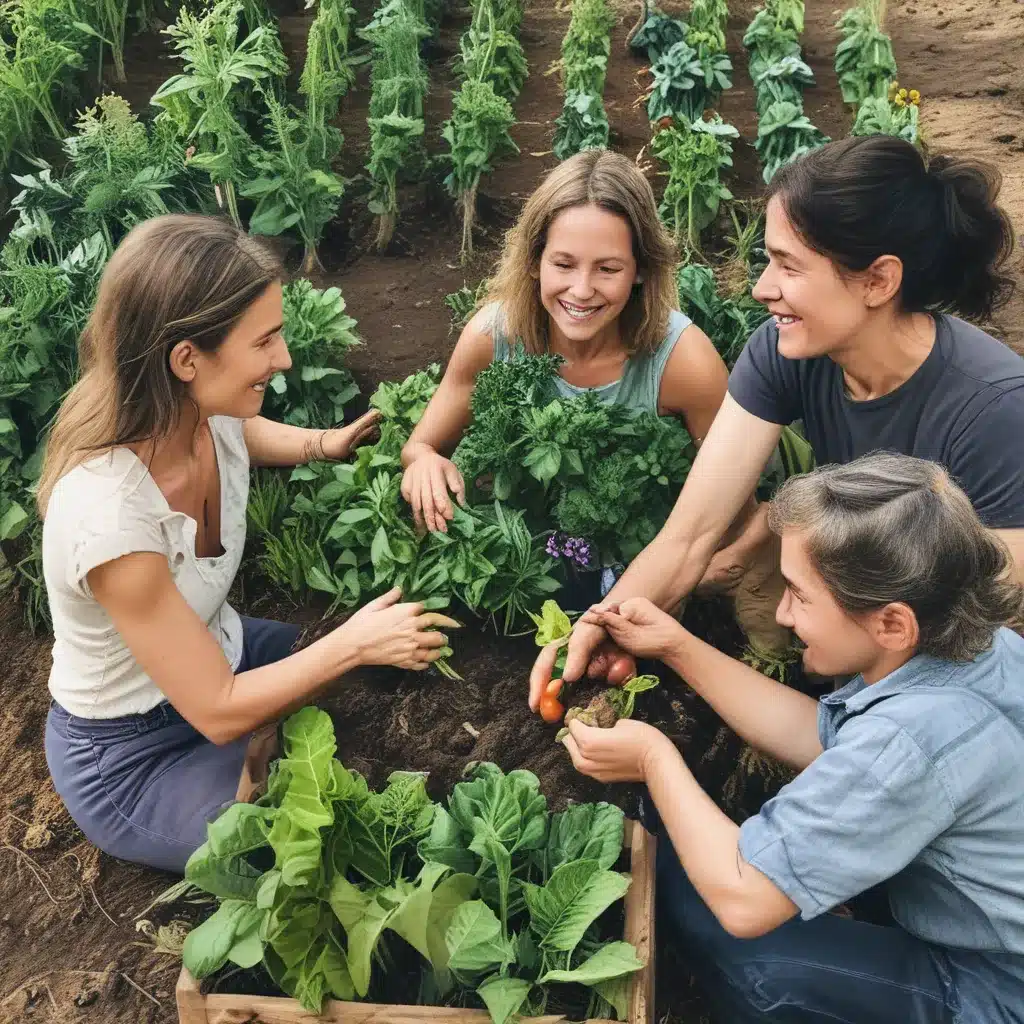
The Roots of a Revolution
As I strolled through the bustling farmer’s market, the vibrant colors and tantalizing aromas of freshly harvested produce filled the air. But it wasn’t just the mouthwatering fruits and vegetables that caught my eye – it was the palpable sense of community that permeated the scene. Farmers enthusiastically shared stories about their labors of love, while customers eagerly listened, some even offering to lend a hand during the next harvest. This wasn’t just a transaction; it was a celebration of the land, the food, and the people who brought it all together.
It was in moments like these that I truly understood the power of community-supported agriculture (CSA). This innovative model, which first took root in Japan and Europe before making its way to the United States in the 1980s, has blossomed into a nationwide movement that is transforming the way we think about food, farming, and our connection to the land.
At its core, a CSA is a partnership between a farm and a community of supporters. Consumers, known as “members,” purchase a “share” of the farm’s harvest at the beginning of the growing season, providing the farmer with much-needed capital to invest in seeds, equipment, and other essential resources. In return, members receive a weekly or bi-weekly assortment of fresh, sustainably-grown produce, often organic, delivered directly to their doorsteps or pick-up locations.
The CSA Difference
But the benefits of a CSA membership extend far beyond the delicious, nutrient-dense food. By becoming part of a CSA, members actively participate in the rhythms of the land, sharing in the triumphs and challenges that farmers face throughout the growing season. They’re not just consumers – they’re stakeholders, invested in the success and well-being of the farm and the community it serves.
This sense of shared responsibility fosters a deep connection between members and their local food producers. As Thornapple CSA member Jessica explains, “When I pick up my weekly box, I feel like I’m not just receiving a product, but a piece of the farm itself. I know the farmers, I understand the work they put in, and I feel a genuine investment in their success.”
This investment goes both ways, as farmers also benefit from the close-knit relationships they build with their CSA members. “Having a community of supporters who are truly invested in the farm has been invaluable,” says Farmer John, founder of Thornapple CSA. “It allows me to focus on sustainable, regenerative farming practices, knowing that my members will be there to support me through the ups and downs of the season.”
Cultivating a Culture of Caring
But the impact of CSAs extends far beyond the individual farm-member relationship. By fostering a sense of community around food production and consumption, CSAs are helping to reshape the way we think about our role in the food system as a whole.
“When you join a CSA, you become part of a larger network of people who care about the health of our land, the well-being of our farmers, and the sustainability of our local food economies,” explains Debbie Roos, Agriculture Agent for the Chatham County Center of North Carolina Cooperative Extension. As Roos notes, the CSA model “allows consumers to eat healthy, sustainably-produced food and have the satisfaction of knowing where it came from and how it was grown.”
This newfound awareness and sense of connection can have a ripple effect, inspiring members to further engage with their local food system. Many CSAs offer educational events, volunteer opportunities, and even on-farm experiences, allowing members to deepen their understanding of the agricultural process and their role within it.
As the North Carolina Cooperative Extension explains, these community-building initiatives are particularly valuable in areas like Chatham County, where small, sustainable farms are helping to preserve the rural landscape and provide a vital economic and social anchor for the region.
Sowing the Seeds of Change
But the impact of CSAs extends far beyond the local level. By empowering consumers to take an active role in the food system, these innovative models are helping to drive a larger cultural shift towards more transparent, equitable, and environmentally-conscious agricultural practices.
“When you join a CSA, you’re not just buying produce – you’re investing in a vision for a more sustainable future,” says Jessica. “It’s about supporting farmers who prioritize soil health, biodiversity, and fair labor practices. It’s about reducing our reliance on long-distance food supply chains and energy-intensive industrial agriculture.”
Indeed, the rise of CSAs has coincided with a growing consumer demand for organic, locally-sourced foods, as well as increased awareness of the environmental and social impacts of our current food system. As the Soil Science Society of America notes, CSAs and other community-based agricultural initiatives are helping to “build more resilient, self-reliant food systems” that are better equipped to withstand the challenges posed by climate change, globalization, and the industrialization of our food supply.
Cultivating Community, One Harvest at a Time
As I reflect on my experiences at the farmer’s market, I’m struck by the profound sense of connection and community that permeates the CSA model. It’s not just about the food – it’s about the relationships, the shared experiences, and the collective investment in the health and sustainability of our local food systems.
By joining a CSA, members become active participants in the vital work of nourishing our communities, both literally and figuratively. They’re not just consumers – they’re stewards of the land, supporters of small-scale farmers, and catalysts for a more equitable, just, and sustainable food future.
So, if you’re looking to deepen your connection to the land, support local agriculture, and cultivate a sense of community around the food you eat, consider joining a CSA today. It’s a decision that not only nourishes your body, but also your soul – and the soul of the communities we all call home.



